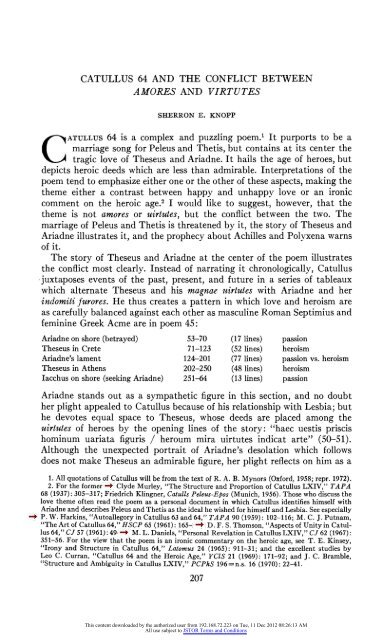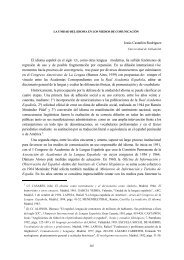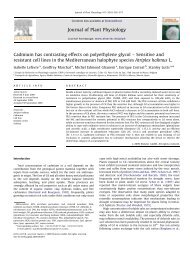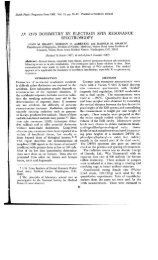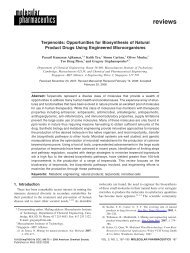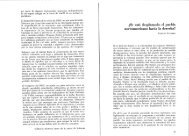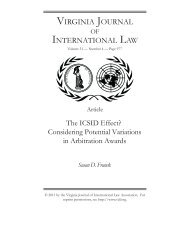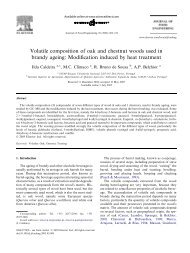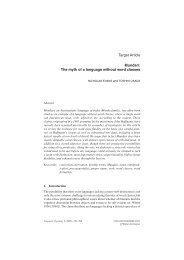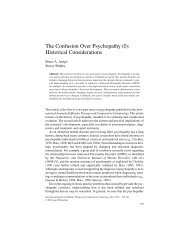Catullus 64 and the Conflict between A mores and Virtutes
Catullus 64 and the Conflict between A mores and Virtutes
Catullus 64 and the Conflict between A mores and Virtutes
You also want an ePaper? Increase the reach of your titles
YUMPU automatically turns print PDFs into web optimized ePapers that Google loves.
CATULLUS <strong>64</strong> AND THE CONFLICT BETWEEN<br />
A MORES AND VIRTUTES<br />
SHERRON E. KNOPP<br />
C ATULLUS <strong>64</strong> is a complex <strong>and</strong> puzzling poem.' It purports to be a<br />
marriage song for Peleus <strong>and</strong> Thetis, but contains at its center <strong>the</strong><br />
tragic love of Theseus <strong>and</strong> Ariadne. It hails <strong>the</strong> age of heroes, but<br />
depicts heroic deeds which are less than admirable. Interpretations of <strong>the</strong><br />
poem tend to emphasize ei<strong>the</strong>r one or <strong>the</strong> o<strong>the</strong>r of <strong>the</strong>se aspects, making <strong>the</strong><br />
<strong>the</strong>me ei<strong>the</strong>r a contrast <strong>between</strong> happy <strong>and</strong> unhappy love or an ironic<br />
comment on <strong>the</strong> heroic age.2 I would like to suggest, however, that <strong>the</strong><br />
<strong>the</strong>me is not a<strong>mores</strong> or uirtutes, but <strong>the</strong> conflict <strong>between</strong> <strong>the</strong> two. The<br />
marriage of Peleus <strong>and</strong> Thetis is threatened by it, <strong>the</strong> story of Theseus <strong>and</strong><br />
Ariadne illustrates it, <strong>and</strong> <strong>the</strong> prophecy about Achilles <strong>and</strong> Po]vxena warns<br />
of it.<br />
The story of Theseus <strong>and</strong> Ariadne at <strong>the</strong> center of <strong>the</strong> poem illustrates<br />
<strong>the</strong> conflict most clearly. Instead of narrating it chronologically, <strong>Catullus</strong><br />
juxtaposes events of <strong>the</strong> past, present, <strong>and</strong> future in a series of tableaux<br />
which alternate Theseus <strong>and</strong> his magnae uirtutes with Ariadne <strong>and</strong> her<br />
indomiti furores. He thus creates a pattern in which love <strong>and</strong> heroism are<br />
as carefully balanced against each o<strong>the</strong>r as masculine Roman Septimius <strong>and</strong><br />
feminine Greek Acme are in poem 45:<br />
Ariadne on shore (betrayed) 53-70 (17 lines) passion<br />
Theseus in Crete 71-123 (52 lines) heroism<br />
Ariadne's lament 124-201 (77 lines) passion vs. heroism<br />
Theseus in A<strong>the</strong>ns 202-250 (48 lines) heroism<br />
Iacchus on shore (seeking Ariadne) 251-<strong>64</strong> (13 lines) passion<br />
Ariadne st<strong>and</strong>s out as a sympa<strong>the</strong>tic figure in this section, <strong>and</strong> no doubt<br />
her plight appealed to <strong>Catullus</strong> because of his relationship with Lesbia; but<br />
he devotes equal space to Theseus, whose deeds are placed among <strong>the</strong><br />
uirtutes of heroes by <strong>the</strong> opening lines of <strong>the</strong> story: "haec uestis priscis<br />
hominum uariata figuris / heroum mira uirtutes indicat arte" (50-51).<br />
Although <strong>the</strong> unexpected portrait of Ariadne's desolation which follows<br />
does not make Theseus an admirable figure, her plight reflects on him as a<br />
1. All quotations of <strong>Catullus</strong> will be from <strong>the</strong> text of R. A. B. Mynors (Oxford, 1958; repr. 1972).<br />
2. For <strong>the</strong> former see Clyde Murley, "The Structure <strong>and</strong> Proportion of <strong>Catullus</strong> LXIV," TAPA<br />
68 (1937): 305-317; Friedrich Klingner, Catulls Peleus-Epos (Munich, 1956). Those who discuss <strong>the</strong><br />
love <strong>the</strong>me often read <strong>the</strong> poem as a personal document in which <strong>Catullus</strong> identifies himself with<br />
Ariadne <strong>and</strong> describes Peleus <strong>and</strong> Thetis as <strong>the</strong> ideal he wished for himself <strong>and</strong> Lesbia. See especially<br />
P. W. Harkins, "Autoallegory in <strong>Catullus</strong> 63 <strong>and</strong> <strong>64</strong>," TAPA 90 (1959): 102-116; M. C. J. Putnam,<br />
"The Art of <strong>Catullus</strong> <strong>64</strong>," HSCP 65 (1961): 165-205; D. F. S. Thomson, "Aspects of Unity in Catul-<br />
lus <strong>64</strong>," CJ 57 (1961): 49-57; M. L. Daniels, "Personal Revelation in <strong>Catullus</strong> LXIV," CJ 62 (1967):<br />
351-56. For <strong>the</strong> view that <strong>the</strong> poem is an ironic commentary on <strong>the</strong> heroic age, see T. E. Kinsey,<br />
"Irony <strong>and</strong> Structure in <strong>Catullus</strong> <strong>64</strong>," Latomus 24 (1965): 911-31; <strong>and</strong> <strong>the</strong> excellent studies by<br />
Leo C. Curran, "<strong>Catullus</strong> <strong>64</strong> <strong>and</strong> <strong>the</strong> Heroic Age," YCIS 21 (1969): 171-92; <strong>and</strong> J. C. Bramble,<br />
"Structure <strong>and</strong> Ambiguity in <strong>Catullus</strong> LXIV," PCPhS 196=n.s. 16 (1970): 22-41.<br />
207<br />
This content downloaded by <strong>the</strong> authorized user from 192.168.72.223 on Tue, 11 Dec 2012 08:26:13 AM<br />
All use subject to JSTOR Terms <strong>and</strong> Conditions


